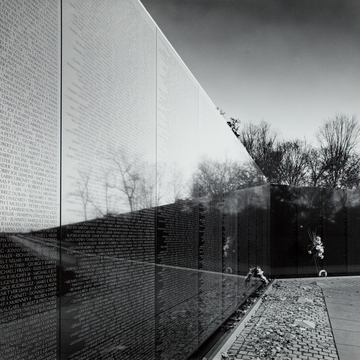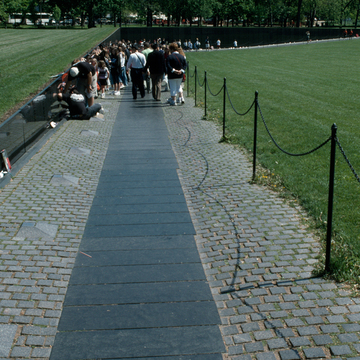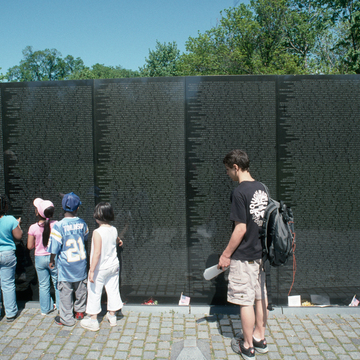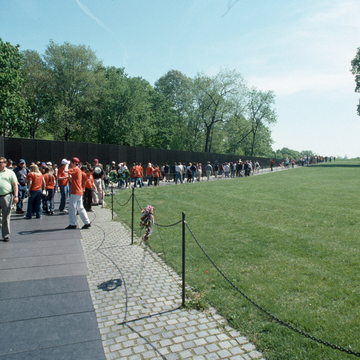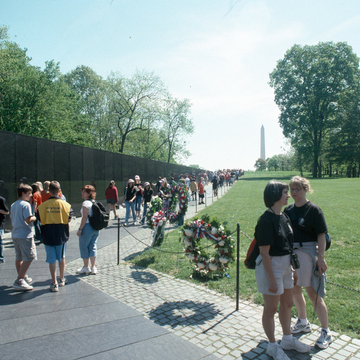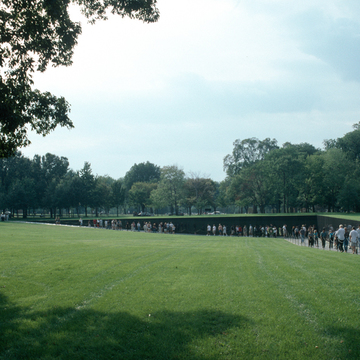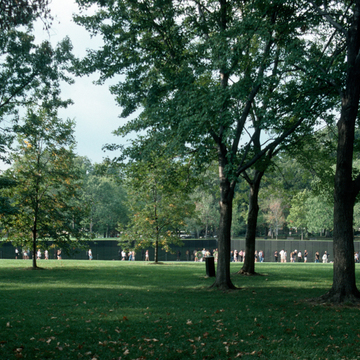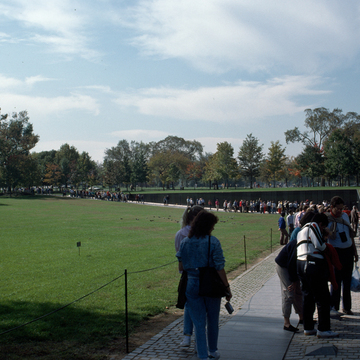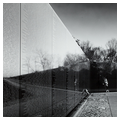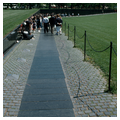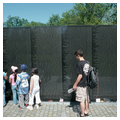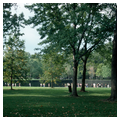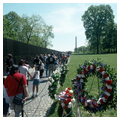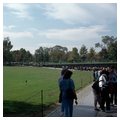Although most American monuments commemorate collective actions, the naming of individuals dates at least from the Civil War, when monuments that recorded lost local heroes by name were erected in numerous towns and cities. On the national level, thousands
Its aesthetic and emotional impact derive from multiple interactions between architecture and spectator, written word and image. Although apparently open and set in a free-flowing landscape, the approach and circulation are tightly controlled. Visitors are subtly forced to enter at either end and remain on the narrow, paved path close to the wall. This confrontation personalizes everyone's visit, as names replace the anonymity of numbers, and as faces reflected in the highly polished black granite turn spectators into participants. The living meet the dead. It is a commonly accepted truism that buildings only come alive when their three-dimensional qualities are actually experienced by humans moving around and through them. At the Vietnam Veterans Memorial, visitors' shifting reflections animate the static stone, a brilliant interpretation of the fundamental interchange between architecture and user.
Open to the south, two 250-foot-long, wedge-shaped walls are set at a 125-degree angle so that they point toward the Washington Monument to the east and the Lincoln Memorial to the west, establishing a fundamental relationship with the two earlier American monuments associated with major wars. Connections established between the living and the dead through the names and reflections are continued by the monument's form, which cuts into the earth, literally bringing the visitor underground to the land occupied by the dead. Lin organized the names to establish continuity with the earth where the dead are symbolically buried. Each wall is composed of seventy-three black granite slabs, seventy of which are inscribed with the names of those dead or missing between 1959 and 1975 in the Vietnam War. The names start at the top of the east wall, continue chronologically to its apex, and then begin again as the west wall emerges from the ground, climaxing as the end meets the beginning where the walls abut against one another. With great economy of formal and material means, the architecture forms a complete aesthetic episode at the same time that it symbolically closes an historical era. These two completed cycles foster the sense of wholeness and integrity we feel.
Because the names are listed chronologically, day by day, those who died together are remembered together. All names are equal; officers are not singled out and no individual hero is honored. The competition program specifically forbade entrants to comment about the validity of the controversial and divisive war. Lin's design demonstrates that it was not 58,000 American soldiers who were sacrificed but identifiable human beings, the real enormity of any war. Elemental things—names, faces, stone, earth, basic geometry—fuse the personal and the abstract. The memorial's aesthetic and popular success is due to the power generated by these physical and metaphorical forces acting so strongly on us that we know we have been struck. We recognize why, but we are not sure how. Truth is beauty; beauty, truth.











